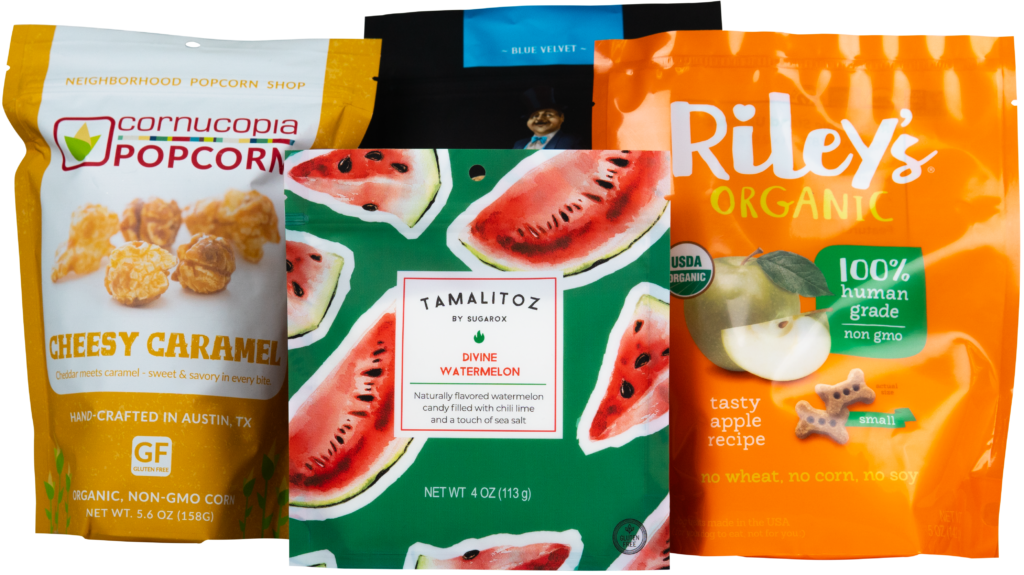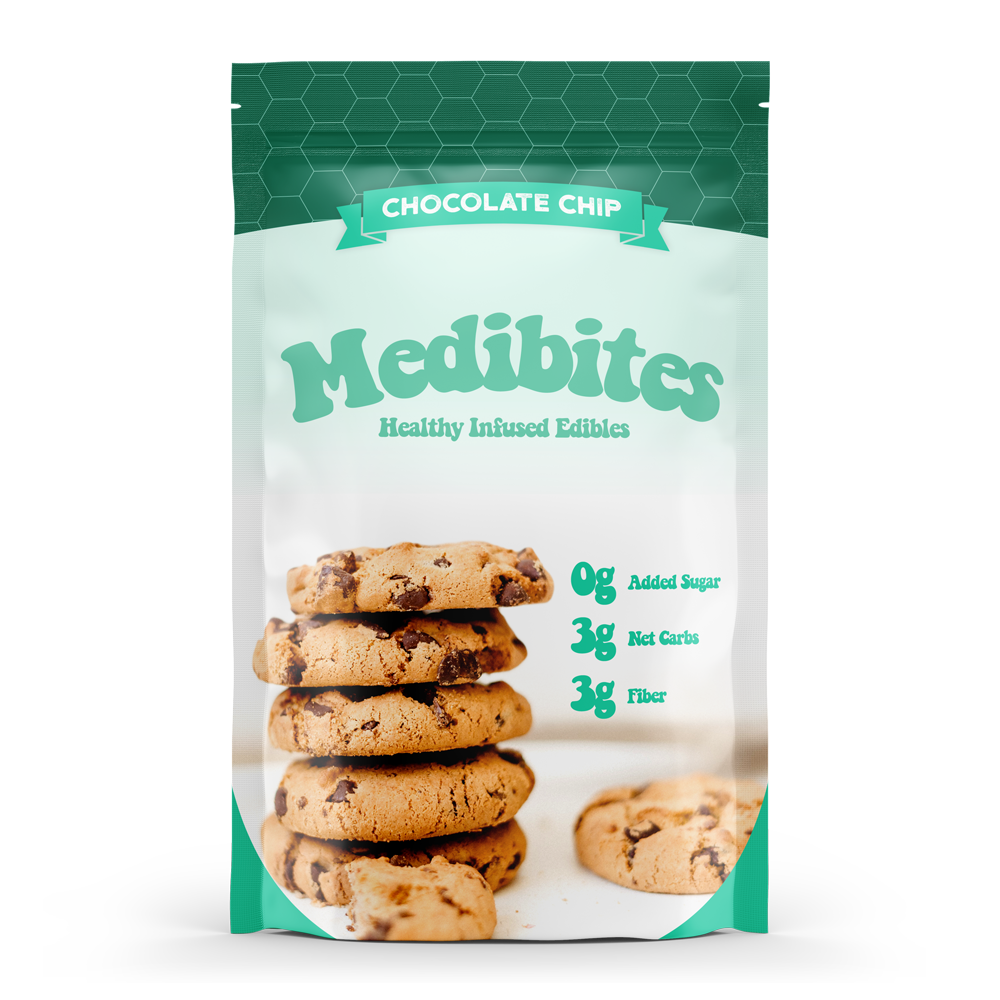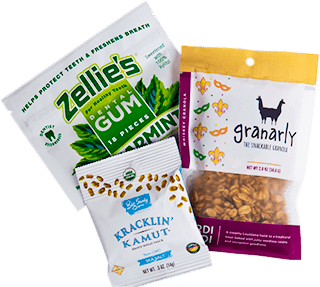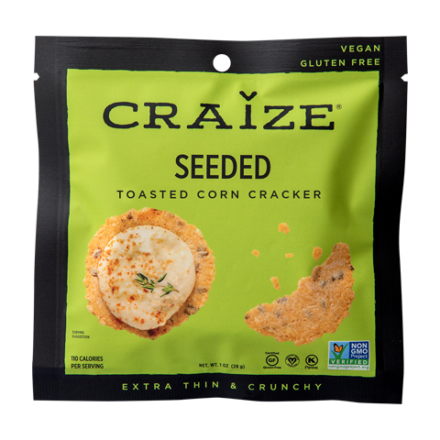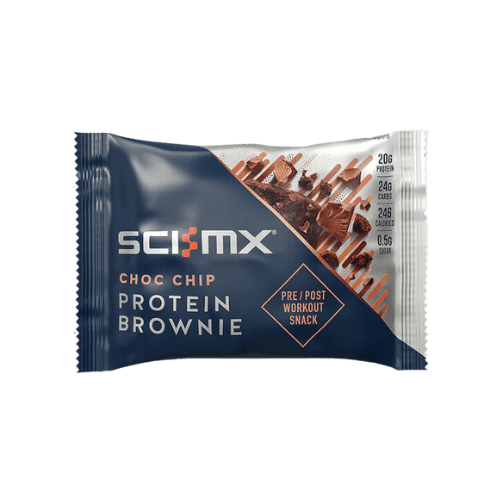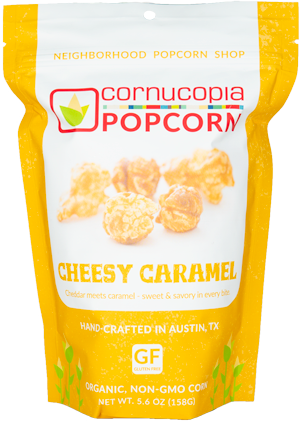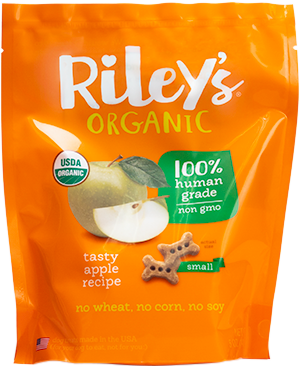It’s no secret that the flexible packaging market is growing and growing fast. Many consumers and packagers are turning to flexible packaging because of its light weight, convenient features, and endless customization options.
But as you create your next custom mylar bag or pouch, you need to decide whether you’ll use cold seal or heat seal adhesives.
In this post, we answer the questions: what are they, how are they different, and which should you choose?
Cold seal and heat seal adhesive coatings are both used in a variety of flexible packaging applications. They each have advantages and disadvantages and work best for specific product needs. Do you know the difference between the two and which works best for your application? Read on to find out.
Choosing the right adhesive coating for your product depends on a number of variables, primarily the specific needs and requirements of the item, such as machine speed and capacity, barrier properties, and seal strength.
10 Day Turnaround Times?
Need it fast? We can help. Rollstock orders can ship in as little as 10 business days after artwork approval. Formed pouches in as little as 15!
Heat Sealing
Heat sealing is the most widely used package sealing technology, and is the preferred choice when a high-integrity seal is needed. Heat seal packaging consists of a multi-layered film including an outer layer, core layer, and interior sealant layer.
Heat seal packaging doesn’t require any special processes or materials (such as pressure-sensitive adhesives). Therefore it’s the more economical choice.
Available in a wide range of laminations, heat seal films also offer a wider variety of performance characteristics over cold seal films. For example, better barrier properties keep oxygen, light, and other environmental elements out of the package (and away from your product).
You can also create a tamper-evident seal to ensure your product’s integrity.
During production you need to carefully manage the following three factors to ensure an effective heat seal:
- Heat: the temperature of the sealing surfaces
- Dwell: the amount of time the jaws of a machine are in contact with the sealing material
- Pressure: the pressure applied by heat seal machinery
These factors work together to create the seal and must be in balance to do so effectively.
Heat sealing can be used in many food and beverage applications, and for pouches and bags in all shapes and sizes.
Cold Sealing
Cold seal packaging is also used in many industries and is preferred for temperature- sensitive products such as chocolate, other confectionery items, and ice cream, as well as medical packaging. It requires only pressure, no heat.
The process involves two films, one reverse-printed with the brand owner’s package design, and a second that provides the barrier to protect the product.
Cold seal adhesives are unique in that they seal only to themselves. For example, when a substrate coated with a cold seal adhesive comes into contact with another substrate coated with the same cold seal adhesive, the two are bonded together through pressure, not heat.
Cold sealing is sometimes referred to as “self-seal”. Packagers using cold seal adhesives can choose the bond strength – from low to high – depending on application and packaging specifications.
But the most notable advantage of cold seal technology is speed. The cold seal process can be up to 10 times faster than heat sealing.
Why? Because production lines don’t have to wait for machines to heat up, as with heat sealing. Additionally, the absence of heat eliminates burn injuries, which leads to a safer working environment.
But there is a downside to the cold seal: the lack of chemical resistance and other properties often required by the FDA, depending on the type of product being packaged.
Cold seal adhesives are also sensitive to air contact and require a suitable release surface.
Conclusion
As you have read, both cold seal and heat seal have their advantages and disadvantages. Each one works best for specific applications. As you seek to find the right sealing process for your product, keep in mind that when you partner with ePac, we can help you determine the right materials and seal for your specific flexible package. Call us today to get started.

